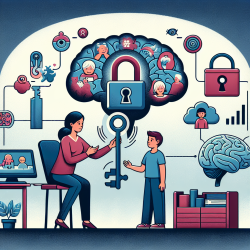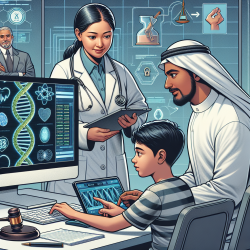The landscape of pediatric feeding assessments has been evolving, especially with the advent of telepractice. A recent study titled Evaluating the Use of Telepractice for Bottle-Feeding Assessments provides significant insights into the reliability and efficacy of using telepractice for conducting bottle-feeding assessments. This blog aims to distill the key findings of this research to help practitioners improve their skills and encourage further research in this domain.
Key Findings from the Research
The study primarily aimed to investigate the inter-rater reliability of bottle-feeding assessments conducted via synchronous telepractice compared to traditional in-person methods. Secondary aims included evaluating parent and clinician satisfaction. Here are some pivotal findings:
- High Agreement Rates: The majority of assessment components (85%) met the agreement criteria (≥80% exact agreement). This demonstrates that most elements of a bottle-feeding assessment can be reliably completed via telepractice.
- Challenges with Specific Assessments: Difficulties were noted for the assessment of palate integrity, gagging during non-nutritive suck assessment, and several components of the tongue tie screen. These tasks often require a hands-on approach, which can be challenging to replicate via telepractice.
- Parent and Clinician Satisfaction: Both parents and clinicians reported high satisfaction levels with the telepractice model. Notably, clinicians appreciated the ability to observe the child in their natural home environment, which can provide a more accurate assessment of feeding behaviors.
Implementing Telepractice in Your Practice
Given the positive outcomes reported in the study, practitioners can consider integrating telepractice into their assessment protocols. Here are some actionable steps:
- Training and Preparation: Ensure that both the telepractice speech pathologist (T-SP) and in-person speech pathologist (IP-SP) are adequately trained. Inter-rater reliability training should be conducted to minimize subjectivity.
- Pre-Appointment Preparation: Provide parents with detailed instructions on how to prepare for the telepractice appointment. This includes optimizing lighting and capturing asynchronous images of the child's oral cavity.
- Technical Readiness: Ensure that both clinicians and families have access to reliable technology. Conduct test calls to troubleshoot any potential technical issues before the actual appointment.
Areas for Further Research
While the study presents promising results, there are areas that require further investigation:
- Improving Intra-Oral Assessments: Research should focus on developing methods to reliably conduct intra-oral assessments via telepractice. This could include enhanced use of asynchronous images or advanced telehealth tools.
- Diverse Populations: Future studies should examine the reliability of telepractice assessments in diverse cultural and linguistic contexts. This will help generalize the findings across different populations.
- Longitudinal Studies: Conducting longitudinal studies will provide insights into the long-term efficacy and satisfaction associated with telepractice bottle-feeding assessments.
To read the original research paper, please follow this link: Evaluating the Use of Telepractice for Bottle-Feeding Assessments.










